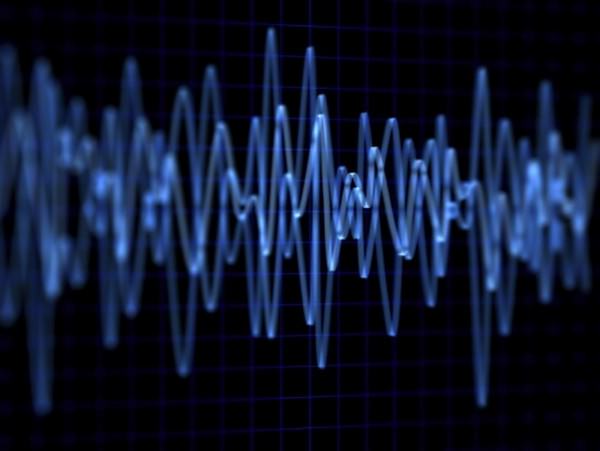Lucid Dreams and Brainwave Entrainment

Meditation is an excellent primer for having lucid dreams. In this article I'll kick-start your journey and also have a look at my favorite brainwave entrainment products.
Meditation: The Stepping Stone to Lucid Dreams
If you're a lucid dreamer, I urge you to follow a daily meditation routine. It's the best way to improve essential lucidity skills like:
- Self awareness (aka lucid waking)
- Visualization (for WILDs and OBEs)
- Dream incubation (for programming lucidity cues)
But there are plenty more reasons to meditate. An abundance of studies have linked regular meditation to improved:
- Concentration
- Memory
- Creativity
- Stress relief
- Immunity
- Wellbeing
Despite the number of profound life benefits, most people avoid meditation.
You may be one of them. You may assume that sitting around in meditation is pointless or boring. Or you may think that meditation is so profound that you'll never get the knack for it.
Of course, you'd be wrong...
And to show you how wrong this line of thinking is, I'm going to introduce you to brainwave entrainment - arguably the easiest way for beginners to experience meaningful meditation.
The Trippy Effects of Brainwave Entrainment

I've used brainwave entrainment for well over a decade. It's very effective for exploring that dreamy borderland sleep-wake state from which blissful lucid dreams can arise.
If you haven't experienced brainwave entrainment before, it's hard convey in words what it feels like when you get there. Words like "calm", "relaxed", "floating", "timeless" don't even cut it.
Even one person describing their experience to another will sound quite different, because meditation treads along a subjective realm.
For me personally, brainwave entrainment creates:
- Deep physical and mental relaxation
- Clarity of thought and a sense of inner peace
- Hypnagogia (seeing swirling colors and patterns)
- Feelings of drifting / floating out of body
- A sense of timelessness
Learning to leapfrog into this dreamy state on demand is a huge advantage for lucid dreamers. That's why, when people ask me what's the best product for lucid dreaming, I choose brainwave entrainment.
It's a common misapprehension to think that brainwave entrainment can "snap" you into a lucid dream while you listen. Actually, the way it works is to induce a state of calm meditation, which is a crucial stepping stone to self awareness in dreams.
This, in turn, enhances your likelihood of having a lucid dream either immediately, hours, or days after having listened to it.
Blisscoded Sound has audio targetted at lucid dreamers. It's easy to use and supports your natural ability to create addictive meditative states at will.
The Science of Brainwave States
Now for a quick lesson on the science of brainwave entrainment.
This technology has actually been around for decades and has been used in many different types of clinical studies.
It has produced measurable results in cognitive function, stress relief, pain, headaches, pre-menstrual symptoms and behavioral problems.
How does it achieve these results?
Your brain treads many different frequencies every day, each depicting your current level of consciousness:
- Beta(16-31 cycles per second) shows focused concentration.
- Alpha (8-15 cycles) shows relaxed alertness and creativity.
- Theta(4-7 cycles) shows meditation, dreams and light sleep.
- Delta (0.1-3 cycles) shows unconsciousness and deep sleep.
Armed with this knowledge, sound engineers created recordings that guide your level of consciousness with descending frequencies.
- Binaural Beats work by playing two separate frequencies into each ear (eg, 130Hz in the left / 136Hz in the right). The brain compensates for the difference in frequencies heard in the right and left ear, creating an internal frequency (eg 6Hz, thereby entraining a Theta operating state).
- Isochronic Tones play evenly spaced pulses of a single tone to create a brainwave entrainment effect. The effect excites the thalamus and causes a frequency following response, where the brain internally recreates the frequency which dictates the level of conscious awareness.
Whichever technology is used, the effects are measurable with an EEG, which measures your brainwave frequencies. Over the years people have extracted all kinds of applications for this technology - from deep meditation to super-learning states.
In a study conducted by The Other 90% in San Francisco, 87% of research subjects (who had never meditated before) entered the Theta State of advanced meditation with binaural beats as measured by EEG.
Brainwave entrainment is so effective because it creates an automatic response. You don't need to do anything special to feel the effect. The only requirement is to lay down peacefully with your eyes closed.
The sounds you'll be consciously aware of include whooshing and buzzing, often disguised by sound effects like rainfall, waves or flowing streams.
Poor quality products do not disguise these sounds very well, which some people find irritating. I definitely have a preference for white noise that is disguised by more flowing sounds, and this helps me slip into the meditative state faster.
What Does Brainwave Entrainment Feel Like?

People respond to brainwave entrainment differently. The most important factor is probably how relaxed and attuned you allow yourself to become; how willing you are to just go with it.
Nonetheless, there are some common features we can all look for when immersing ourselves in the meditative realm of brainwave entrainment.
- Within the first few minutes you'll begin to feel mentally relaxed and your mind chatter will disappear. This can be difficult (and sometimes impossible) to achieve through a silent breathing meditation unless you are well-practiced, which is why this technology is ideal for beginners.
- Typically within 8 minutes you'll be led into a deeper state of mental and physical relaxation, marked by hypnagogic imagery (the swirling light patterns that appear when you fall asleep at night) as well as gentle imaginary tactile sensations such as floating or drifting. You can guide these sensations yourself. This is a great place to be for lucid dreamers. You'll have a sense of timelessness and freedom, because your mind is still and you can enjoy just "being". It's a powerful stress reliever. And best of all, you'll find you can start to create dreamscapes with your mind, either out of the blackness or as an evolution of your hypnagogia.
- The deeper you go... the more imaginary physical sensations you'll be able to generate with your mind. If you keep your awareness with your body in bed, you may feel as if your arms and legs are in totally new positions. This can lead to other out-of-body sensations, which mark the onset of wake-initiated lucid dreams, originating with the perception of leaving your body.
- When the audio finishes, just stay in the meditation silently. It's a good time to practice a WILD or OBE exit, or simply fall asleep. To produce a WILD, I prefer to create a dreamscape in my mind and propel my consciousness into a distant dream body, so there is no distracting illusion of having an OBE. My dream body may be running, swimming or walking through a dreamscape. It all helps to dissociate my mind from my half-asleep body in bed so I can enter the lucid dream world.
Remember, brainwave entrainment teaches you how to habitually enter these dreamy altered states of consciousness from an alert waking state.
If you can achieve that 3-4 times a week then you're on solid footing. Lucid dreams will start to come more naturally and easily under this frequent meditation practice.
Tips on Getting Started
Here are some more tips to boost your success:
- Listen in the early morning (after 5am) or during an afternoon nap.This is when your body's chemistry is just right for a lucid dream, after at least 4-6 hours sleep. Your brain is also raring to dive into longer periods of REM sleep. You can also listen before sleep at night, but primarily to wind down and meditate.
- Relax your body as if you're going to sleep.Take some deep breaths, get comfortable (I lay flat on my back) and focus on the relaxing sounds. Imagine your whole body going numb / becoming invisible / being weightless. Any fidgeting should quickly settle down after 1-2 minutes. If you have an itch, scratch it, but then return to your comfortable position.
- Set the scene with visualization. To ease your mind into the meditation, create an imagined scene that matches the sounds you're hearing. For instance, with a rainfall audio, I imagine sitting under a pergola on a mountainside. Be as surreal as you want - it's all good dream fodder. I just watch the rain pour down around me and enjoy the feeling of being a million miles away from reality. When the visual hypnagogia arises, I go with that instead. You can create any desired dream scene when the meditation is deep enough.
















